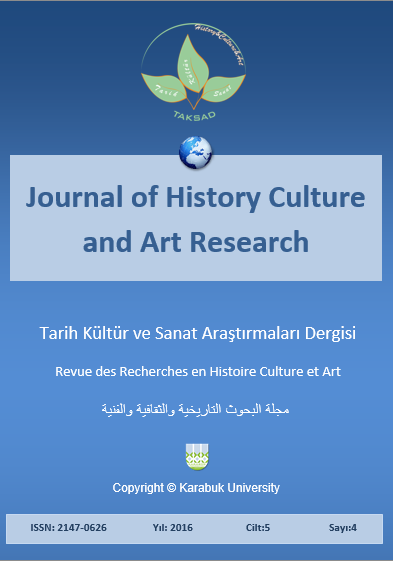Study of the Appropriate and Inappropriate Methods of Visual Arts Education in the Primary Schools According to the Types of Multiple Intelligences
DOI:
https://doi.org/10.7596/taksad.v5i4.620Keywords:
Teaching visual arts, Visual arts education, Multiple intelligences, Pre-school education, Teaching through arts, Teacher abilities.Abstract
In the current changing world, named the era of knowledge explosion, specialists and those involved in education have been attracted finding a response to a question: what should we teach today’s students that to be useful for them in the future life? The main objective of this study is to investigate the appropriate and inappropriate methods of visual arts education in pre-school. According to the types of multiple intelligences, reaching to this goal requires careful planning, proper training and proper content selection along with talent and interests of learners along with the use of appropriate practice training and educational staff training. The research handles descriptive and analytic methods as well as academic literature. The results suggest the importance of understanding the multiple intelligences in the visual arts education.
References
Honari, Morteza (1966). Introduction to Understanding Nowruz Art and People magazine.12 (138), 71-77.
Shirvanlou, F. (2006). The Necessity of Art in the Process of Social Development, Ernest Fischer, Trans Tehran, Tous Youshij, N Divan.
Dushiri, N, (1990). Book Review: Kanizo: Collection of Stories. Niloofar Publications, First Edition.
Demirel, İrfan Nihan (2011) Contributions provided by visual arts lesson for students at secondary stage in elementary education, Social and Behavioral Sciences, Volume 15, 2011, Pages 1972-1976.
Jane Chia, Birnie Duthie (1994). Computer-based art learning: Primary children's responses, Computers & Education, Volume 23, Issue 3, Pages 197-209.
Mihai Braslasu (2015). Aspects of Didactic Communication in Primary School, Social and Behavioral Sciences, Volume 180, Pages 497-501
Cerghit, I. (2006). Methods of Education, Polirom, Iasi
Gombrich, E. H. (2000). Concerning ‘The Science of Art’: commentary on Ramachandran and Hirstein. J. Conscious. Stud. 7, 17–27
Gardner, H. (1990). Art education and human development. Los Angeles: The Getty Centre for Education in the Arts.
Johnson, R. B. & Onwuegbuzie, A. J. (2004). Mixed methods research: a research paradigm whose time has come. Educational Researcher, 33 (7): 14-26.
Creswell, J. W. & Garrett, A. L. (2008). The “movement” of mixed methods research and the role of educators. South African Journal of Education, 28 (3), 321–333.
Downloads
Published
How to Cite
Issue
Section
License
All papers licensed under Creative Commons 4.0 CC-BY.- Share — copy and redistribute the material in any medium or format
- Adapt — remix, transform, and build upon the material for any purpose, even commercially.
Under the following terms:
Attribution — You must give appropriate credit, provide a link to the license, and indicate if changes were made. You may do so in any reasonable manner, but not in any way that suggests the licensor endorses you or your use.
- No additional restrictions — You may not apply legal terms or technological measures that legally restrict others from doing anything the license permits.







